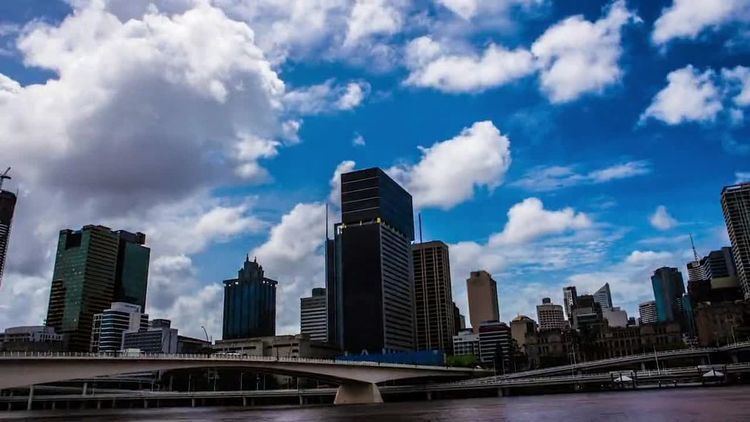 | ||
Hyperlapse (also walklapse, spacelapse, stop-motion time-lapse, motion timelapse, moving timelapse) is an exposure technique in time-lapse photography, in which the position of the camera is being changed between each exposure in order to create a tracking shot in timelapse sequences. In contrast to a simple motion timelapse – dolly shots, which are realized with short camera sliders; in hyperlapse photography, the camera is being moved through very long distances.
Contents
Technique
The cinematic method of timelapse, an accelerated view of real-time, is supplemented with an additional spatial component. The camera is typically aimed at an exactly defined fixed point, while being moved over large distances. The movement may be accomplished by walking in order to be able to realize long tracks without having a long rail or a camera dolly. The single pictures are aligned in post-production and merged to produce a moving image.
History
The term "hyperlapse" was first created by the American filmmaker, Dan Eckert. The term itself was essentially popularized and stamped by the video artist, Shahab Gabriel Behzumi and his video, "Berlin Hyper-Lapse" (2012)
These artists were inspired by Godfrey Reggio, an American director of experimental documentary films, like the famous Qatsi trilogy. His timelapse scenes affect a similar pathos, taking the viewer to a less human, omniscient position, due to the shifted time- and space-dimension.
Another technique can be traced back directly to Guy Roland. He invented his technique in 1986, experimenting with a Super 8 mm film camera and compressed imagery; lining up objects and filming them one frame at a time, while gradually changing his vantage point between each photo. His first, full-fledged execution of the technique appeared in 1991 with the film Pace, shot, on Super 8 film in Montreal, Quebec. He returned to the technique 4 years later with the film Pacer, and elaborated on visual themes contained in “Pace”. Again shot in Montreal, this time on 16mm film on a wind-up Bolex movie camera, Roland took the technique further and began to create the kind of movements and rotations that are now a familiar part of hyperlapse videos. A low resolution telecined video of “Pacer” was included in the “Planet Street” edition of the video magazine “Channel Zero” in 1995, which introduced the technique to wider audience; influencing visual artist like TopherZ of the Dandelion Collection, who elaborated on some of its visual themes in videos like “Nirvana Drive”. TopherZ credits Roland as his inspiration for the technique.
The penultimate step in the technique’s development came with Roland’s film “Spacer”, released in 2004. Filmed in Vancouver, BC between 2001 and 2002, when digital photography was still in its infancy, it was shot using essentially ‘point-and-shoot’ cameras, the Nikon 990, and one of the first DSLR’s, the Olympus E-10. Though un-constrained from the linearity of shooting on film reels, Roland struggled with the slow camera processing speeds and the limited media storage of the time while making the film; hindrances no longer an issue for today’s hyperlapse artists. “Spacer” appeared in over 70 film festivals world-wide, and took home many awards, including Best Experimental film at the 2005 World Wide Short Film Festival in Toronto. The name of the film was changed in 2006 to “Kino Citius” when it was sold to the NFB in Canada, who were to produce the first all-digital large format film “Citius” with Guy Roland, using the technique, before changes to Canada’s political landscape forced the organization to cancel the production.
Development
Developments in picture quality are enabling more efficient exposure methods and more powerful stabilization software automation for sequence stabilization in post-production. In addition, the continually increasing maximum sensor resolution of the digital single-lens reflex cameras lead to more possibilities in post-production, because the higher sensor resolution allows possible synthetic changes to the zoom factor without having visible quality loss. This increases the dynamics of the sequence.
Canadian design agency teehan+lax have used images from Google Street View to produce hyperlapses. Since Street View captures the full 360° scene, a wide range of camera movements can be simulated. The agency's demonstration video became widely viewed when it was released in 2013.
A group from Microsoft Research presented their version of Hyperlapse at SIGGRAPH 2014, using GoPro cameras. They are working on apps for Windows, Windows Phone, and Android. They presented a method for converting first-person videos, for example, captured with a helmet camera during activities such as rock climbing or bicycling, into hyper-lapse videos, i.e., timelapse videos with a smoothly moving camera. At high speed-up rates, simple frame sub-sampling coupled with existing video stabilization methods does not work, because the erratic camera shake present in first-person videos is amplified by the speed-up. The algorithm first reconstructs the 3D input camera path as well as dense, per-frame proxy geometries. A novel camera path for the output video is optimised that passes near the input cameras while ensuring that the virtual camera looks in directions that can be rendered well from the input. Finally the algorithm generates the novel smoothed, timelapse video by rendering, stitching, and blending appropriately selected source frames for each output frame.
Facebook-owned photo social network Instagram launched an app called Hyperlapse on 26 August 2014. Hyperlapse can be used to easily create time lapse videos using Instagram's stabilization technology and the mobile device’s camera app.
